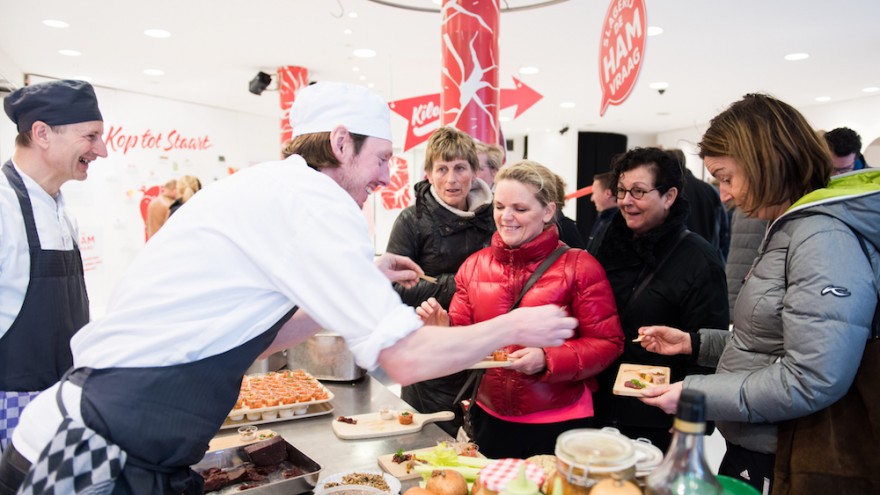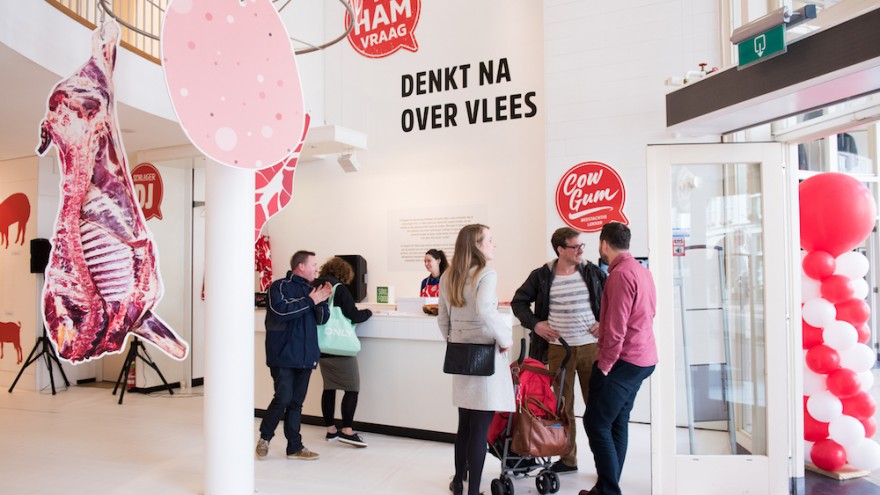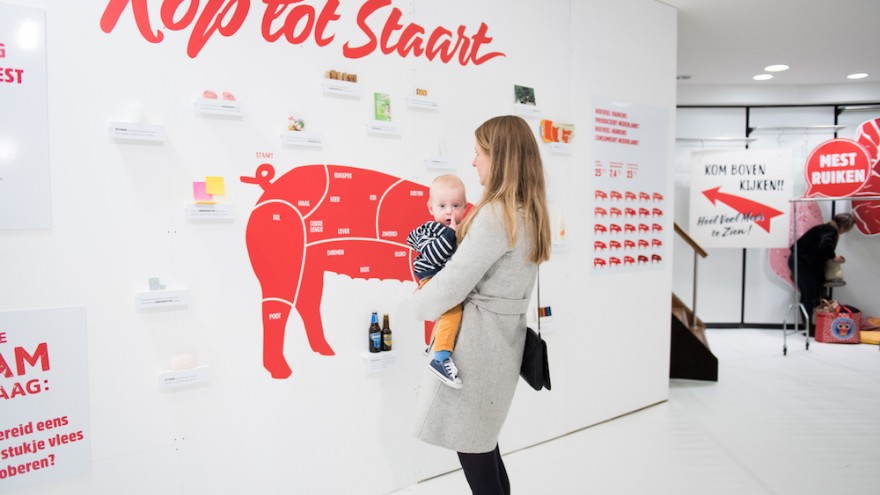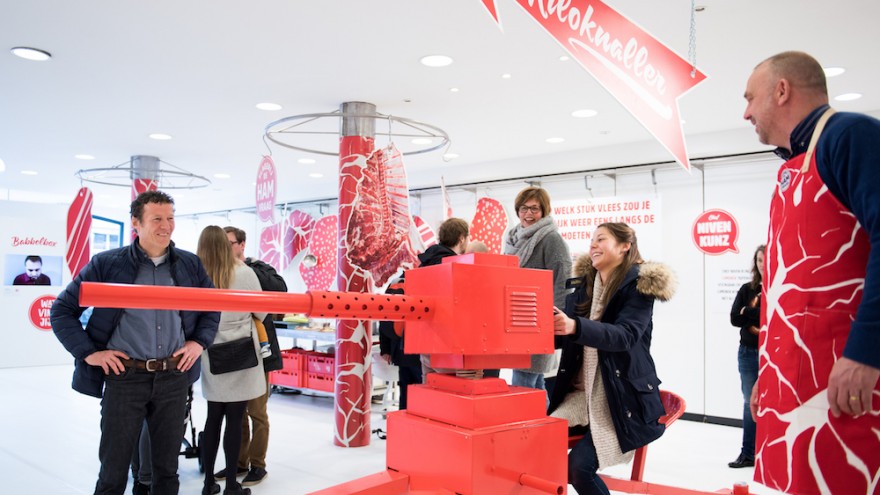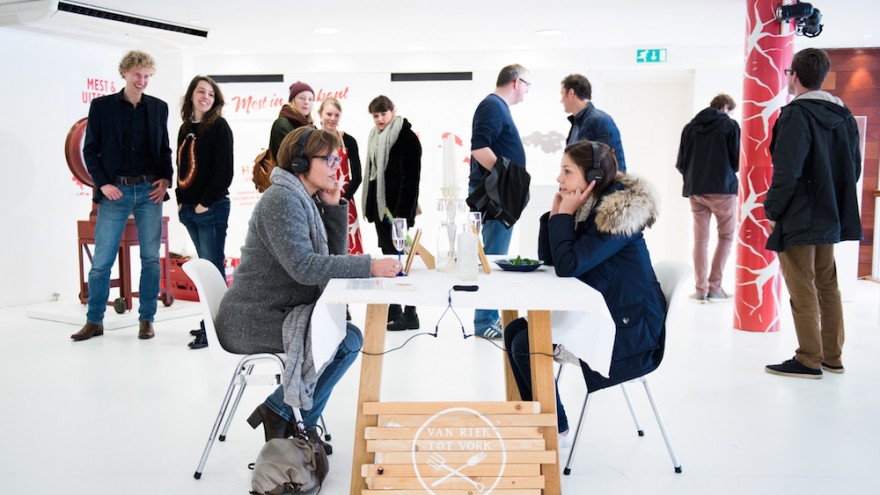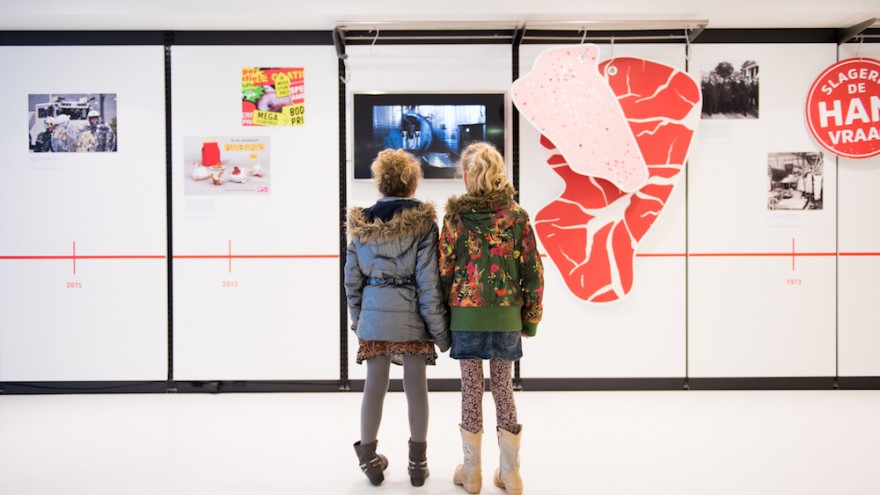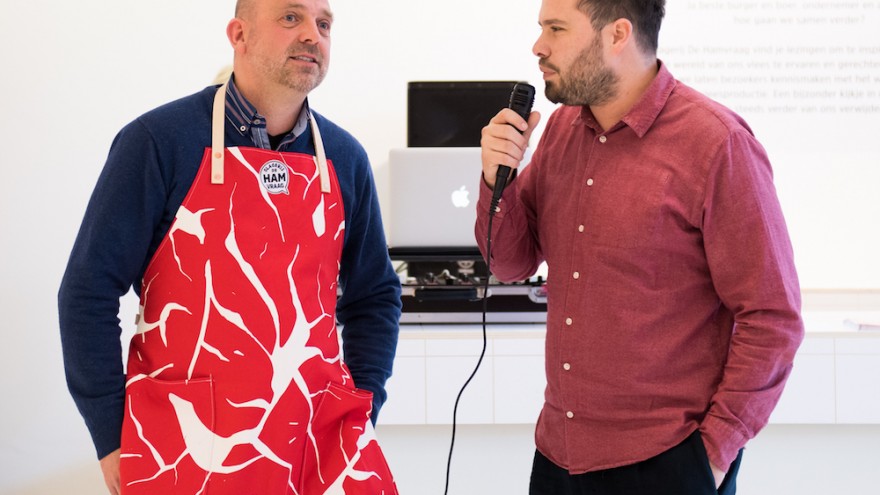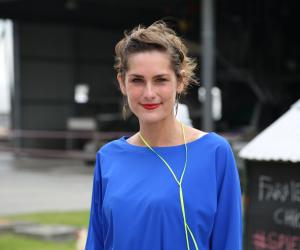If we would completely let go of all of our assumptions, habits and morals and could give meat a new place in our society, what would this look like? During Redesign Meat at Slagerij de Hamvraag (a conceptual butchery in the Netherlands that questions our current meat consumption) over 50 visitors were asked this question by eating designer Marije Vogelzang and designer Madeleine Berlis.
Berlis gave a brief introduction of her project Future of Meat (for more on this you can watch the video below):
“In this video installation about meat consumption in 2050, the visitor does not find shocking images of factory farming, but a visualisation of five different scenarios. The spectator is a time traveller, who ends up in the year 2050 by traveling through a dark tunnel. The square one arrives upon has five ‘doors’ – inspired by Alice in Wonderland. Behind each door hides a future scenario which the visitor can see, sitting at a small dinner table. Five kitchens, five nutritional models: from cultured meat, insects, less and organic meat to a vegan scenario and a future where we will do nothing – and continue the way we consume as we do now. In a quiet area with stools and a newspaper full of facts about the scenarios, the time traveller can overthink the future scenarios and can choose his or her favourite scenario.”
Vogelzang then gave striking examples of futuristic projects, including her own project “Faked Meat” where she invented a new animal whose habitat and behaviour effected his taste: the Ponti.
"Why don't we invent new animals?" said Vogelzang. The fantasy animals I invented have a habitat, lifestyle and diet and these factors decide on the design and taste of the meat. For example, the Ponti lives in empty volcanoes and nibbles on the ashes of the volcano. Therefore the meat of the Ponti is delicately smoked.”
Another futuristic food project example she talked about is the Bistro Invitro and the Invitro Cookbook by Next Nature, based on the idea we can grow meat from stem cells in a bioreactor. The Bistro Invitro is a conceptual restaurant that only serves this test tube-grown meat. Dodo is on the menu and patrons can even grow nuggets of their own flesh to feed to each other. The questions that the project ask include what it means to be a vegetarian if no animals die and what is the danger we will lose touch with the origin of our meat.
Since Animals need not be slaughterered in the production of in vitro meat, the technology may give rise to new human-animal relations. Pigs in urban backyards could serve as the living donors for muscle stem cells through biopsies every now and then. While the pigs live happy lives as companion animals, feeding on our waste food, their cells are cultured in local meat factories. – Next Nature Network.
Vogelzang also gave some other examples like the "Shit burger" by Mitsuyuki Ikeda, The Incredible Shrinking Man by Arne Hendriks and the Urban Algea Folly by Eco Logic Studio.
With all these ideas in mind, visitors to the Slagerij de Hamvraag got down to business and brainstormed for an hour about their ideal future of meat.
All norms, ethics and culture went out of the window. What if we go with the idea of eating insects, are we sure we won’t be sitting here again in another hundred years to talk about our excessive insect-consumption? Or why is it that we already have all these fabulous alternatives for meat, but we always want them to look like meat and keep comparing them to the real thing. Will we ever be able to stop eating meat? And if we do, what would happen to us physically? Would we evolve into toothless creatures?
Some Slagerij visitors wanted to solve multiple problems at once. They thought of ideas that would reduce meat consumption but at the same time addressed something else. One example was "the party pig", where a new ritual is created around eating meat (like we used to do when meat wasn’t as accessible as nowadays) and only eat pig once a month with the whole community and celebrate with a feast. This way we would eat less meat and at the same time we would address loneliness in the community. Or we would design a ‘sportmarket’ (instead of supermarket). You would have to work out for your meat, so you would appreciate it more and also get your workout!
Many of the attendees of Redesign Meat weren't even designers. Visitors inluded farmers and interested consumers. The event and the temporary ideas-butchery helped them, and us, to think of new ways to look at meat.
The CowGum, meat flavoured chewing gum that featured on Design Indaba last week, was one of the ways the pop up butchery was raising awareness for their event and creating conversation around our food assumptions.

